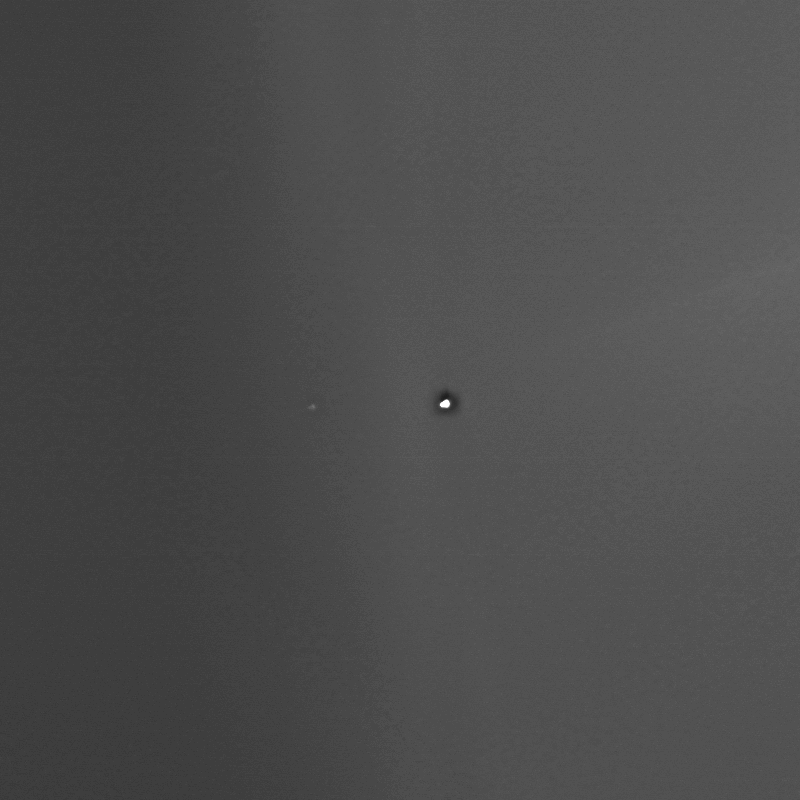It’s not often we see our planet and satellite from the perspective of another world, and we’ve never seen them like this before. That little white dot zooming around the slightly bigger white dot, that’s the Moon orbiting Earth as seen from Mars.
To celebrate its 20th anniversary, the European Space Agency’s (ESA) Mars Express orbiter not only gave us the world’s first live stream from Mars but it turned back to face its home planet and snapped a nostalgic family portrait of Earth and the Moon inspired by the iconic “Pale Blue Dot”.
Thirty-three years ago, on its way out of the Solar System, Voyager turned around one last time and took what would become an iconic image of our planet. “That’s here. That’s home. That’s us,” said Carl Sagan, who was instrumental in that image being taken, when it was first released. This new image of Earth and its natural satellite may not be the most impressive of our planet you’ve ever seen, but it still manages to capture that feeling of “Hey, wow, that’s us”.

The images show the Earth and Moon on May 15, 21, and 27, and June 2, 2023, capturing about half of the Moon’s monthly orbit.
Image credit: ESA/DLR/FU Berlin
“[W]e wanted to bring Carl Sagan’s reflections back to the present day,” explained Jorge Hernández Bernal, who is part of the Mars Express team behind the image.
“In these simple snapshots from Mars Express, Earth has the equivalent size as an ant seen from a distance of 100 metres [328 feet], and we are all in there. Even though we have seen images like these before, it is still humbling to pause and think: we need to look after the pale blue dot, there is no planet B.”
The first planetary image Mars Express took 20 years ago is also of Earth and the Moon taken from 8 million kilometers (~5 million miles) away on its way to Mars (below). The new images are taken from 300 million kilometers (186.4 million miles) away as it’s completed over 24,000 orbits of the Red Planet.

Taken on July 3, 2003, Mars Express takes its first photo looking back at Earth and the Moon from a distance of 8 million kilometers on its way to Mars.
Image credit: ESA/DLR/FU Berlin
The Mars Express mission was originally designed to last just one Martian year (687 Earth days). In the 20 years since its launch, it has traveled over 1.1 billion kilometers in its orbit of Mars, communicated with 12 other orbiters, landers, and rovers that have since landed on the planet’s surface, and contributed to over 1,800 published scientific papers helping us explore Mars’s atmosphere, climate, and surface. It shows no signs of slowing down and has been approved to continue until at least 2026.
“Perhaps it will only be another 20 years before humans can look up from the surface of Mars to see Earth in the night sky,” said Mars Express project scientist Colin Wilson.
Source Link: Watch The Moon Whizz Around Our Home Planet As Seen From Mars